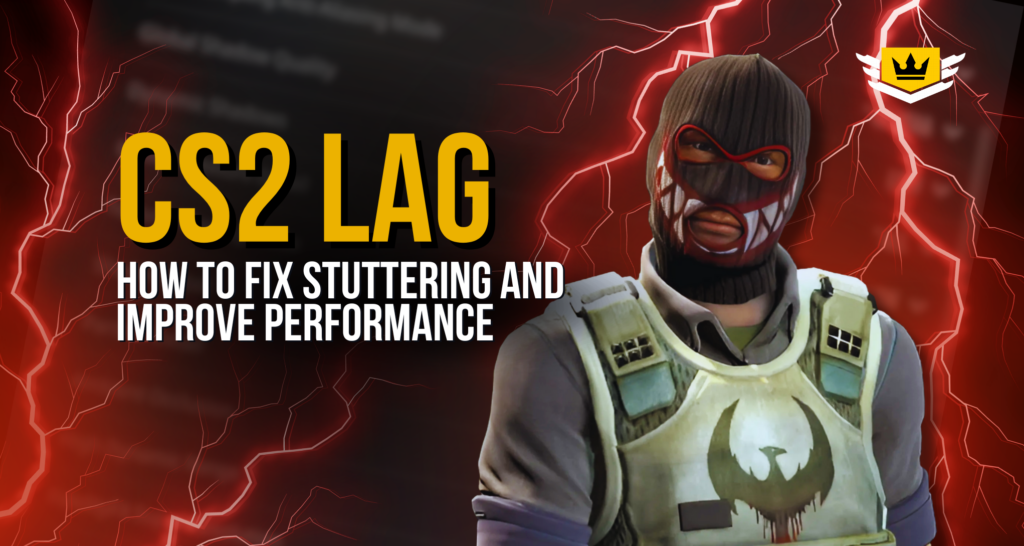CS2 Lag: How to Fix Stuttering and Improve Performance

CS2 lag is a common issue that affects players by causing delayed responses, stuttering visuals, and inconsistent performance, leading to a frustrating gaming experience. Whether caused by network instability, hardware limitations, or improper game settings, lag can disrupt gameplay precision and reaction times. This article explores various solutions, from optimizing in-game settings and hardware configurations to addressing network-related problems, ensuring a smoother and more enjoyable CS2 experience.
CS2 Stuttering with High FPS: Causes and Fixes
Many players experience CS2 stuttering with high FPS, where the game appears choppy despite having a high frame rate. This can be caused by frame pacing issues, where frames are not delivered evenly, resulting in an inconsistent visual experience. Micro-stuttering can also occur due to conflicts between the CPU and GPU, which prevents smooth frame rendering.
Background applications running in the system may contribute to CS2 lagging, as they consume valuable resources that should be dedicated to the game. CPU bottlenecks, particularly in systems with older processors, can also lead to inconsistent performance and noticeable CS2 stuttering even at high FPS.
To fix these issues, adjusting in-game settings such as reducing particle effects and disabling unnecessary visual enhancements can help stabilize frame pacing. Keeping graphics drivers up to date ensures that your hardware is optimized for the latest performance improvements. Additionally, disabling background applications that consume CPU and memory resources can significantly reduce CS2 lag spikes and improve overall gameplay smoothness.
CS2 Stuttering: Common Causes and Solutions
CS2 stuttering can arise from both network-related and hardware-based problems. Network stuttering is often caused by unstable connections, resulting in unpredictable delays and rubberbanding, while hardware-based stuttering is usually linked to improper game configurations or resource limitations.
One major culprit of CS2 stuttering with high FPS is improper synchronization settings. Enabling V-Sync can sometimes introduce input lag and frame drops, while disabling it may lead to screen tearing. Finding a balance by adjusting refresh rates and using adaptive sync technologies can help mitigate these issues.
Checking system resource usage is also essential, as high CPU or memory consumption from background applications can negatively impact game performance. Optimizing Windows settings for gaming, such as enabling Game Mode and adjusting power settings for maximum performance, can further enhance stability and reduce CS2 lagging.
By implementing these solutions, players can achieve a smoother and more consistent experience, eliminating CS2 lag spikes and ensuring competitive gameplay without disruptive stuttering.
CS2 Performance Tweaks: Optimizing FPS and Stability
Improving CS2 FPS and stability requires a combination of in-game adjustments and system optimizations. Below are some essential tweaks:
- Use launch options for better performance:
- Add -high to prioritize CS2 in CPU scheduling.
- Use +fps_max 0 to remove FPS limits.
- Apply -novid to skip the intro video for faster startup.
- Set +cl_forcepreload 1 to preload textures and models, reducing stutters.
- Adjust in-game graphics settings to minimize lag:
- Lower shader and effect quality to reduce GPU load.
- Disable motion blur and ambient occlusion for a cleaner image.
- Turn off V-Sync to avoid input lag.
- Lower anti-aliasing settings for higher frame rates.
- Optimize Windows settings for gaming:
- Enable Game Mode to allocate system resources efficiently.
- Set CS2.exe to High Priority in Task Manager.
- Disable background applications such as Discord overlays and browser tabs.
- Ensure the system is in High Performance Mode in power settings.
Advanced Fixes for CS2 Lag and Stuttering
For players experiencing persistent CS2 stuttering or FPS drops, advanced tweaks can further stabilize performance:
- Tweak NVIDIA/AMD settings for smoother performance:
- In NVIDIA Control Panel:
- Set Power Management Mode to Prefer Maximum Performance.
- Enable Low Latency Mode for better input response.
- Turn on Threaded Optimization for multi-core performance.
- In AMD Radeon Software:
- Enable Radeon Boost for dynamic performance scaling.
- Set Texture Filtering Quality to Performance.
- In NVIDIA Control Panel:
- Overclock GPU/CPU for higher stability:
- Use MSI Afterburner or similar software to slightly overclock GPU.
- Ensure CPU overclocking is stable and temperatures remain safe.
- Upgrade to an SSD if running CS2 on an HDD for faster data loading.
- Check for hardware bottlenecks and possible upgrades:
- Monitor CPU/GPU usage using Task Manager or HWMonitor.
- Upgrade RAM if using 8GB or less for better multitasking performance.
- Ensure adequate cooling solutions to prevent thermal throttling.
By applying these performance tweaks and advanced fixes, CS2 lagging, stuttering, and FPS drops can be significantly reduced, leading to a smoother and more competitive gaming experience.
FAQ
- Why is CS2 stuttering even though I have high FPS?
CS2 stuttering with high FPS can be caused by frame pacing issues, CPU bottlenecks, or background applications consuming system resources. Adjusting graphics settings, updating drivers, and optimizing system performance can help.
- How do I fix CS2 lag spikes during gameplay?
CS2 lag spikes are often caused by network instability or background processes using bandwidth. Using a wired connection, selecting a closer server, and disabling background downloads can help minimize lag.
- What are the best settings to reduce CS2 lagging?
Lowering shader quality, disabling V-Sync, enabling Game Mode, and adjusting power settings to High Performance are key steps in reducing CS2 lagging and improving stability.